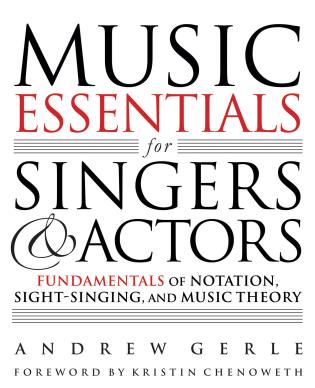
A financial aid letter should outline the cost of attendance, which includes both direct and indirect costs. The letter will also provide information about the family's financing options to pay for attendance. For federal financial aid to be granted, a family must have financial need. The family must also demonstrate that they can meet the financial gap between their financial resources and their demonstrated need. This is especially true if a family is applying to an in-state college tuition.
Cost of attendance
In your financial award letter, the cost of attendance includes information about how much you will pay to attend school. It includes tuition and fees as well as living expenses. This information will help you decide if you are eligible for financial aid. It can also help you estimate how much you need to borrow.
Colleges also charge students tuition and fees. They also charge for room, board, travel, and other expenses. The total COA is typically broken down into two groups: billable (or non-billable). The tuition and fees that are billable include those costs, which can be covered by federal grants, loans, gifts, and other state grants. Books, supplies, miscellaneous, and books are all non-billable costs. The rest is typically covered by student savings. Sometimes students may have to get private loans to cover the remaining cost.

Costs both direct and indirect
Direct and indirect costs are two different ways to calculate the financial aid you will receive. The direct costs are the cost of attending school. Indirect costs are the costs you incur beyond college. These may include transportation, books and school supplies. Colleges may lump together these costs. You should make sure you understand all costs involved.
Direct costs include tuition and fees that you pay to attend school. Indirect expenses are costs that you may incur in the course of an academic year, but which are not directly related the educational objective. They include costs like rent, utilities, as well as personal expenses. You should also consider the cost of rent, food, and utilities if your residence is off campus.
Lending
A financial aid letter can provide loans to help students pay for school. Students do not need to borrow all of the federal loans available. They have the option to choose the amount they need later. Federal law allows students to receive up to $5,500 of federal loans in their first year. Federal loans don't have to be repaid. They may also have terms that are different from private student loans.
It is crucial to read the terms and conditions before taking out any loan. Some loans are subsidized. Others require a family contribution. Federal student loans can be the least expensive option for student loans. However, they may have flexible income-driven repayment options. Before applying for private loans, it is best to exhaust all available government loans. To avoid being taken advantage of, make sure you understand all the terms and conditions of your loan.

Unsubsidized loans
Federal student loans can be obtained in either subsidized or unsubsidized form. The only difference between them is the interest rate, and when they begin accruing. Subsidized loans can be given to students who have financial need. Interest will not accrue during the deferment period. The interest on these loans is paid by the federal government.
A federal loan can allow you to borrow maximum $20,000 depending on your education and your dependency status. Below is the chart. If you do not repay the loan in 120 days, interest will be accrued. However, you can reduce the loan cost by returning any unused funds earlier.
In-house assistance
You should carefully read your letter of financial aid from the institution. Keep in mind the following important information: how much aid the institution will provide, how much they expect you to contribute, and how much. You should also be familiar with the policies of the university or college, especially if the award is for gift aid.
FAQ
What does it really mean to be an early childhood teacher?
Teacher in early childhood education needs to have specific training. Before being permitted to teach in public schools, most states require that candidates for teaching positions have been certified by a state board.
Some states require teachers to pass tests on subjects like math and reading.
Some states require teachers with early childhood education degrees to complete a set number of hours.
Most states have minimum requirements about what a teacher must know. However, the requirements may vary between states.
What are some ways you can get scholarships?
Scholarships are grants that can be used to pay college costs. There are many types to choose from. These are:
-
Federal Grants
-
State Grants
-
Student Loans
-
Work Study Programs
-
Financial Aid
Federal grants are made directly by the U.S. government. Federal grants generally require that applicants meet certain criteria. To demonstrate financial need, applicants must meet certain requirements.
Each state offers state grants. These grants are not always based on financial need. Some states may offer them for specific reasons.
Student loans are issued by banks and other lending institutions. Students borrow money to pay tuition and other living expenses.
Employers should be encouraged to use work-study programs to help them hire qualified students. Employers are required to pay employees at least minimum wage.
Financial aid allows low-income families to afford college by paying for all or part of their tuition costs.
What is the purpose or education of schooling?
Education should equip students with the skills they need to be successful in work. It is not only an academic pursuit, but also a social activity in which children can learn from each other and gain confidence through participating in sports, music, or art. Education is about learning to think critically and creatively so that students can be self-reliant and independent. What does it mean for a school to be able to meet high educational standards?
Good educational standards are those which ensure that all pupils achieve their potential. These standards provide clear guidelines for teachers to follow with their students. Good education standards allow schools to be flexible enough for changing needs. Fair and equitable education standards must also be maintained: Every child is equal in terms of chance of success, regardless of his/her background.
What exactly is a school of trade?
For those who have not been able to get a degree at traditional higher education institutions, trade schools offer an alternative route. They provide career-oriented programs to help students prepare for specific occupations. Students enrolling in these programs typically complete two years of coursework in a single semester and then enter into a paid apprenticeship program where they learn a job skill set and receive on-the-job training. Trade schools can include technical schools, community colleges and junior colleges as well as universities. Associate degrees are offered by some trade schools.
What is the best way to start teaching early childhood?
First, you must decide if early childhood education is what you want to pursue. Then you will need your bachelor's degrees. Some states require students hold a master's degree.
You will also likely need to attend classes during the summer months. These courses will cover subjects such as curriculum development and pedagogy (the art or teaching).
Many colleges offer associate degrees that can lead to teaching certificates.
Some schools offer certificates or bachelor's degree in early childhood education. But others only offer diplomas.
There may not be any need for additional training if your goal is to teach from home.
What is the difference between college and university?
A university provides higher education. It offers various undergraduate and postgraduate degrees in different fields.
A college is generally smaller and less respected than a university. It might offer fewer courses, but it will often have its own specialist areas.
Statistics
- Think of the rhetorical power of nineteenth-century abolitionist Harriet Beecher Stowe, Martin Luther King, Jr., or Occupy Wall Street activists with their rallying cry of “we are the 99 percent.” (bostonreview.net)
- “Children of homeowners are 116% more likely to graduate from college than children of renters of the same age, race, and income. (habitatbroward.org)
- They are more likely to graduate high school (25%) and finish college (116%). (habitatbroward.org)
- In most developed countries, a high proportion of the population (up to 50%) now enters higher education at some time in their lives. (en.wikipedia.org)
- They are also 25% more likely to graduate from high school and have higher math and reading scores, with fewer behavioral problems,” according to research at the University of Tennessee. (habitatbroward.org)
External Links
How To
How to get started in homeschooling
Homeschooling involves the teaching of subjects to children through a variety of methods including reading books, watching videos, exercising, and listening to music. This method of learning is thought to be one of the best because it allows students to learn at their own pace and to develop skills such problem-solving skills, creativity, self discipline, communication, as well as social skills.
People who wish to educate their children at their home are more common than ever, particularly parents who work full-time but don't have enough time for their children. They can choose to homeschool, which allows them the freedom to devote their energy and time to their children's education, without worrying about who will take care of them while they are at work.
Homeschooling has many benefits. They can develop their ability to think critically and create, increase their knowledge, improve their language skills, develop their identity, become independent learners and have greater control over their lives than if they were in school.
Homeschooling has one main goal: to give quality education to children in order to help them become successful adults. However, certain requirements must be fulfilled before starting homeschooling. This includes determining whether your child qualifies to attend private or public schools. Consider what curriculum you will use when you start homeschooling. There are many curricula that you can find online, depending on your budget and expertise. Some of these include classical, Montessori, Waldorf, Reggio Emilia, Charlotte Mason, unschooling, natural learning, and others. Another requirement that you must fulfill before starting homeschooling is to make sure that you have the required resources needed to teach your child. This means purchasing textbooks, educational materials, computers, electronic devices, toys, games, art supplies, musical instruments, etc. You can buy these items online or purchase them from local stores.
Once you have completed these steps, you can apply to become a homeschooling mom. It is best to ask your state education department for help. They can help you complete forms and guide you in how to begin homeschooling.